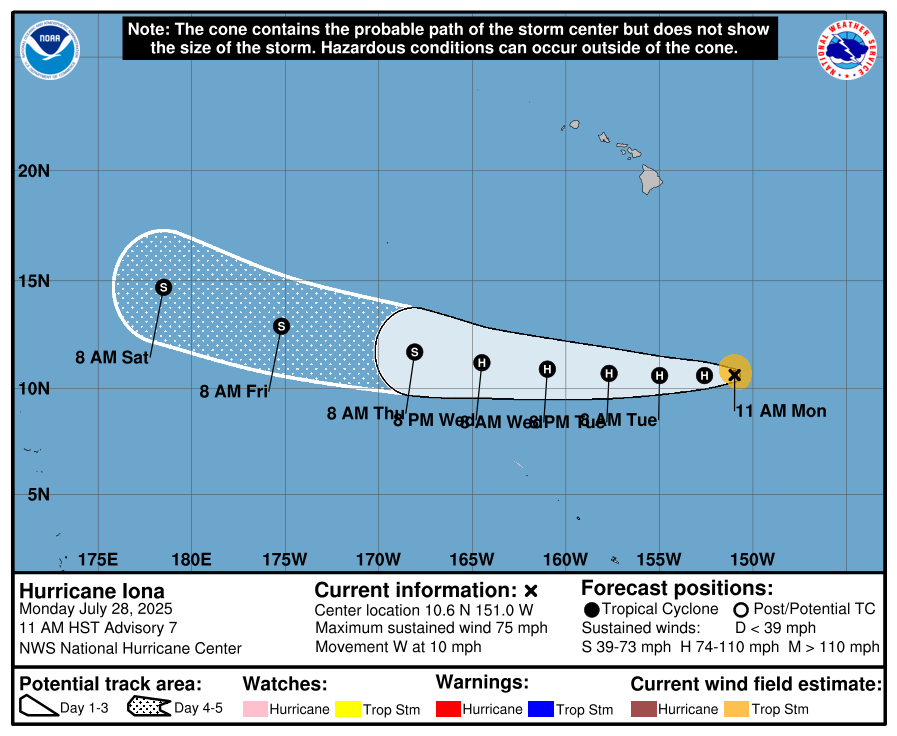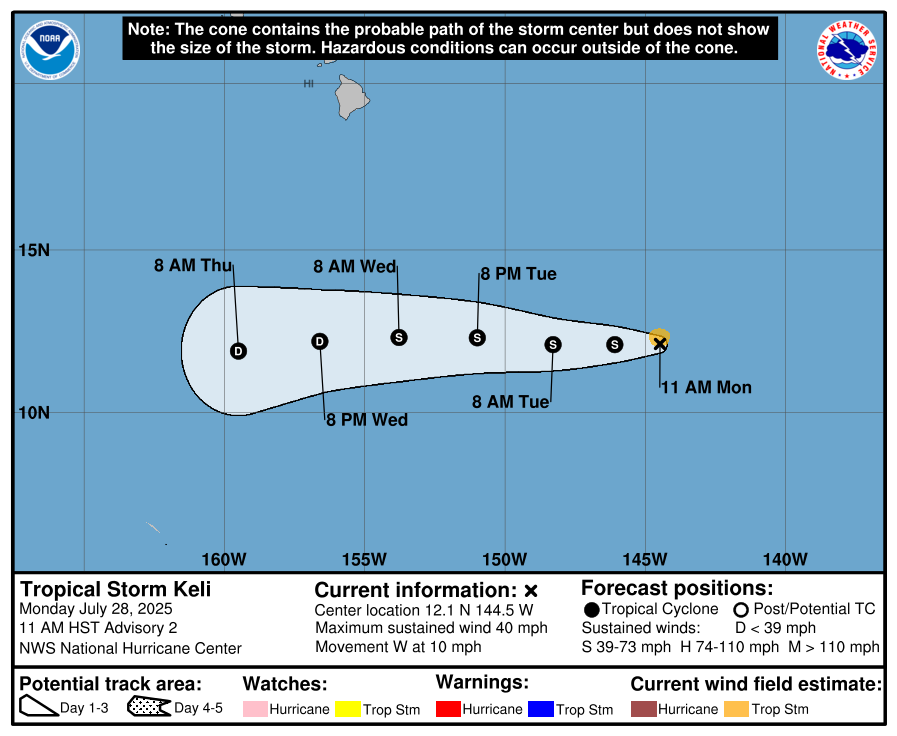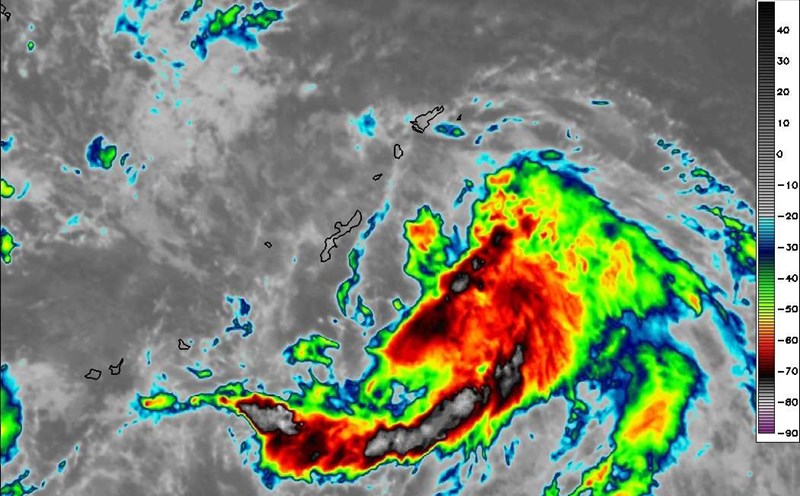While January in the central Pacific near Hawaii rapidly intensified in just a few days, Tropical City Keli also appeared immediately after, and a third storm is on track to form following two previous storms.
Although none are forecast to make landfall directly in the Hawaiian Islands (US), meteorological authorities still warn that the risk may increase in some areas.
On the morning of July 29 Hawaii time, January 1 - the first in a series of three storms - strengthened into a Category 3 hurricane with winds at the center of the storm reaching 185 km/h and expected to strengthen further during the day.

The new tropical depression on the night of July 26 on January 2 quickly strengthened to a Category 1 storm on July 28 with winds of 120 km/h, with the central pressure dropping to 993 mb. The US National Hurricane Center (NHC) said that storm Iona will continue to strengthen over the next 48 hours before gradually weakening due to contact with colder waters.
Shortly after January 1, Tropical Storm Keli formed. Although not as strong as Iona, Keli is expected to continue to increase rapidly in the next few days.

Behind Keli, a rapidly developing tropical disturbance is likely to become the third storm in this rare chain.
Although all three storms maintain their trajectory westward and away from the Hawaiian Islands, the indirect impact of these tropical storm systems could still affect local weather.
According to the US National Weather Service (NWS) in Honolulu, trading winds will increase slightly as storms approach Hawaii. This phenomenon may reduce the altitude of the subtropical layer, limiting clouds and rain from July 30 to August 1.
Although the weather forecast is not too harsh, the NWS warns of a risk of forest fires at near the danger level in some dry areas of Maui and the Big Island. As storms pump moisture south, dry air flows may overflow the islands. Some places on the windy slopes may reach the minimum humidity for a few hours each afternoon. However, the wind speed is not expected to exceed the danger threshold, so an official forest fire warning has not been issued.
On July 29, the islands in Hawaii continued to experience hot and humid weather as the trough moved through, combined with weak sea winds in the windless areas. However, from July 30, the high pressure area will return, returning the weather to a dry, stable state, helping to reduce the risk of forest fires in the short term.
Although tropical storms do not make landfall directly, NWS emphasizes that it will continue to closely monitor the development of this storm chain, especially in the context of prolonged drought and the risk of forest fires in Hawaii still present.










